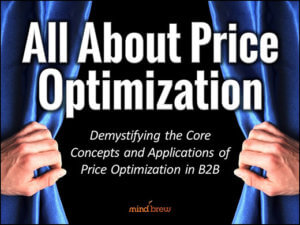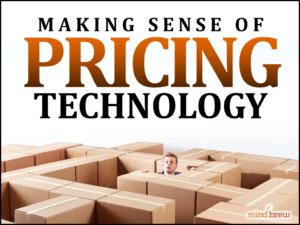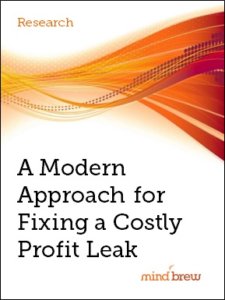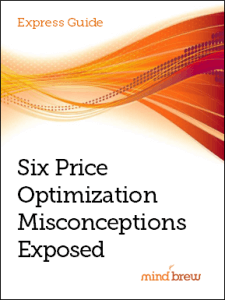As most subscribers are aware, we here at the PricingBrew Journal are big proponents of pricing technology. In our view, leveraging pricing technology represents the height of best practice and we’ve been beating that particular drum for almost a decade now.
Unfortunately, there are some very stubborn myths about pricing technology that continue to hold too many companies back.
Recently, we exposed a number of these myths in an Expert Interview with Jared Wiesel of Revenue Analytics. Jared and his firm have a lot of experience helping mid-market companies leverage price optimization technology, so hearing his perspectives on the major myths and misconceptions they encounter was quite enlightening.
One of the most costly myths Jared addressed in our conversation is the notion that pricing technology is really only applicable and accessible to the largest companies—i.e. huge multinational companies with hundreds of millions or billions in revenue.
For far too many mid-market companies, this misconception effectively keeps pricing technology off their radar screen as a viable solution to their pricing issues. And as a result, these companies end up foregoing the many financial and competitive benefits before any real consideration whatsoever.
So what is the truth of the matter? Simply put, the applicability of pricing technology has much more to do with the complexity of the pricing environment than the size of the company or the amount of revenue being addressed.
As Jared explains in the interview, there are three dimensions of pricing complexity to consider:
- Decisions — How many discrete pricing decisions are being made? How many transactions are being executed? How many different products are being sold? To how many different customers?
- Variability — How diverse or unique are all of these pricing circumstances and decisions? Are there many price segments with different willingness-to-pay? Are there multiple sales channels with unique needs?
- Frequency — How often are decisions being made? How frequently are circumstances changing? How quickly are supply and demand dynamics fluctuating? How often do pricing updates need to be made?
As you can see, you don’t have to be a massive company to be dealing with a tremendous amount of complexity along any or all of these dimensions. In fact, a small distributor with thousands of products, transactions, and customers can have a much more complex pricing environment than a huge manufacturer with just a few products selling through a handful of channel partners.
And as pricing complexity increases, technology not only becomes a more and more viable solution; it’s very often the only way to truly get control of the situation and address the issues.
So…that blows up the “applicability” aspect of the myth. And as for the “accessibility” part of the myth, Jared knocks that down, too.
In the interview, he explains that while pricing technology was indeed quite expensive and labor intensive 10-15 years ago, it’s a whole different world today. Over time, continuous innovation and competition in the space has driven down delivery and support costs significantly, even as technical capabilities and software functionality have skyrocketed.
And to further reinforce this point, Jared highlights how his company’s price optimization solutions have been designed from the ground up to require less investment than a single full-time employee.
You can listen to the interview and judge for yourself, but I’d say that the “pricing technology is really only applicable and accessible to the largest companies” myth has been utterly and thoroughly busted.
And you know what that means…
No more excuses!















